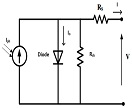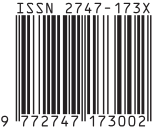Analytical Methods for Mathematical Modeling of Dye-Sensitized Solar Cells (DSSCs) Performance for Different Local Natural Dye Photosensitizers
DOI:
https://doi.org/10.19184/cerimre.v5i2.33499Keywords:
Analytical methods, Mathematical modeling, DSSCs, Photosensitizers, Irregular parameters, Conversion efficiencyAbstract
In this paper, a new approach to generate the modified ideal diode factor of solar cells was developed which overcomes the problem of assuming its value a constant. Five models were employed to calculate the five-model parameters of one standard solar cell and fourteen DSSCs with varying photosensitizers. The results exhibit the conversion efficiencies of the solar cells studied lies in the range 2.57% ≤ η ≤ 0.03%. In particular, the standard cell has the highest efficiency 3.02% followed by DSSCs with photosensitizers: bitter gourd (2.57%), mango (1%), and bougainvillea (0.83%). Also, the five model parameters calculated are all positive for El Tayyan model and the rest of the models show discrepancies of varying degrees. Furthermore, despite the existence of these discrepancies, the results reveal good fit between the model data and experimental data I-V curves. This suggests the tendency or possibility that irregular parameters may be desirable for some applications. Thus, the discrepancies found in the estimated parameters can serve as a vital assessment criterion and tool for researchers and engineers in selecting the appropriate parameter estimation method for their applications.
Keywords: Analytical methods, Mathematical modeling, DSSCs, Photosensitizers, Irregular parameters, Conversion efficiency.








